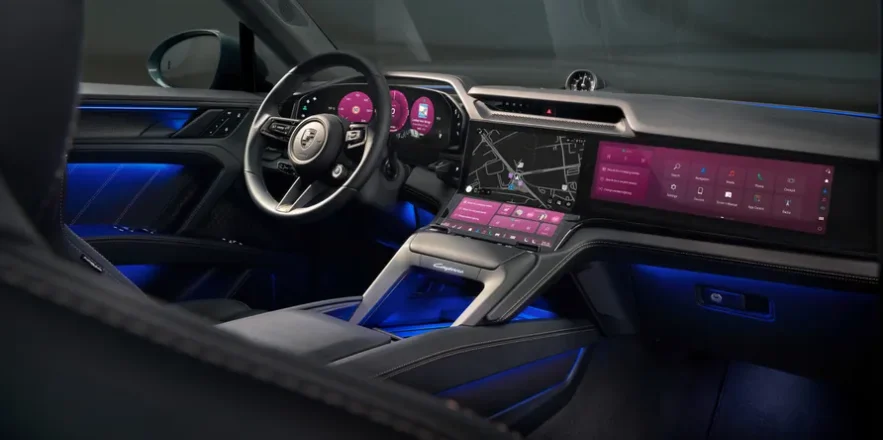Porsche is making headlines with the interior of its upcoming Cayenne Electric. At its heart is the ‘Flow Display’ – a continuous curved OLED panel that stretches across the dashboard, merging infotainment, driver and even passenger displays behind a single expanse of glass.
With additional 14-15 inch driver and passenger screens this is Porsche’s most ambitious use of in-car glass to date. But it also raises an important question: what happens when this glass gets damaged?
The challenge of futuristic next-gen glass
- Complexity: These are no longer simple glass panes – they contain integrated smart tech and touch controls
- Cost: Replacing or repairing isn’t just a glass job, it involves recalibration, electronics and OEM parts. This could be eye-wateringly expensive, not to mention the downtime and stress.
As manufacturers continue to push glass innovation in their new vehicles, it poses a real threat and uncertainty for the consumer. This trend goes far beyond dashboards. Today’s vehicles rely on glass-tech for everything: windscreens packed with sensors, headlight units and touchscreen interfaces. Each is becoming increasingly costly to replace.
That’s where we aim to provide a solution. Our glass protection acts as an invisible shield, preserving optical clarity while absorbing impacts that would normally cause chips, cracks and damage.
Looking forward
The Porsche Cayenne EV is a reminder of how far manufacturers are aiming to push glass tech in modern vehicles. Protecting it isn’t just about avoiding a costly bill – its about preserving technology, safety and the driving experience.
Click here if you’re interested in protecting your vehicle’s glass
